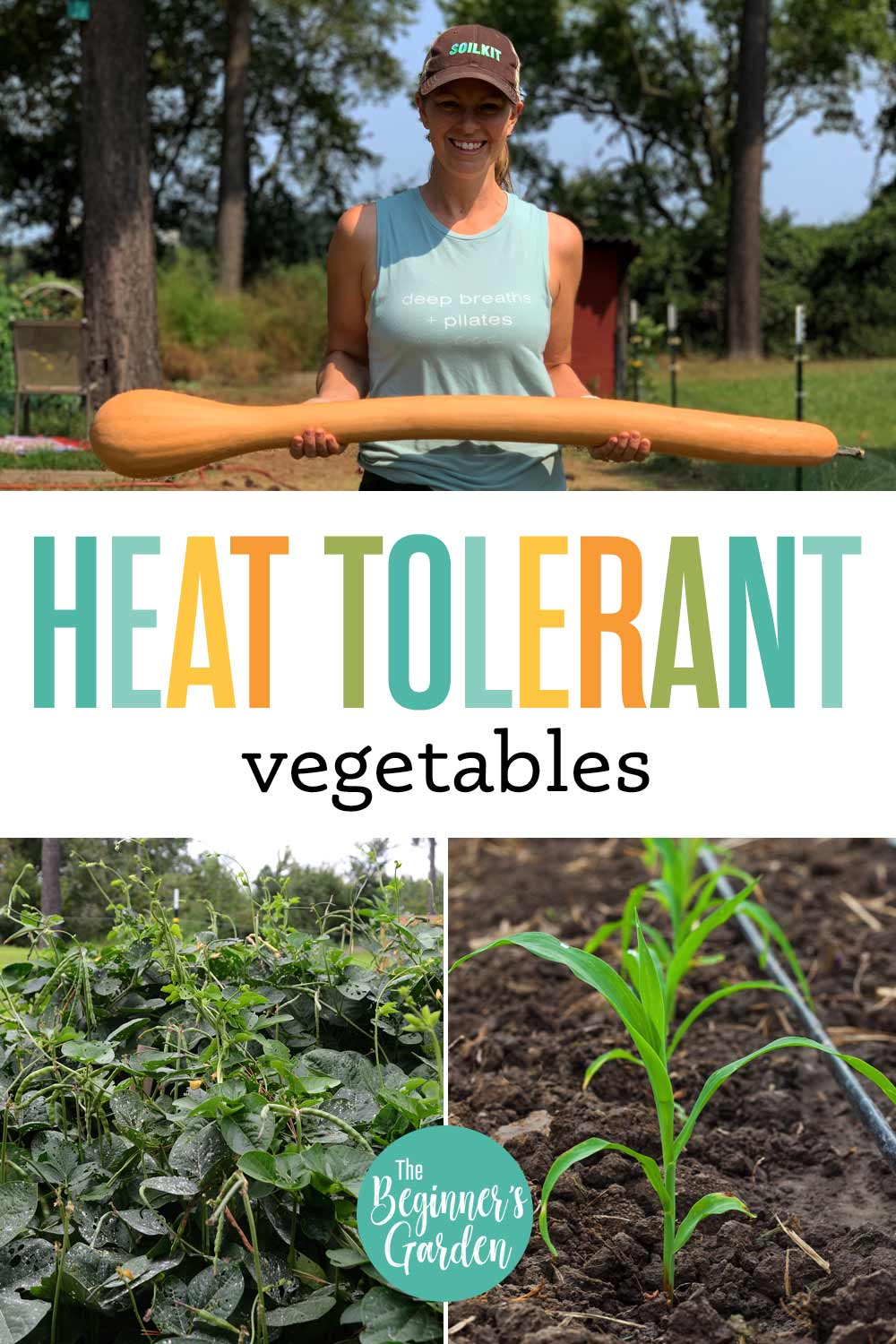Heat Tolerant Vegetables
Extreme heat in the middle of the summer is becoming more of a problem, and because this affects home gardeners, it’s a great idea to consider growing heat tolerant vegetables.
Whether you have gardened for awhile or you are just starting out, finding crops that can take the heat is a valuable asset to have in the middle of the summer when other crops may suffer.
Last summer, in my Arkansas garden, had over seven weeks of intense heat and little rain during that period. That can be enough for any garden to struggle to keep up. Through that time though, I found several crops that can take the heat and even high humidity.
While every garden is different, when we experienced heat last year, these are the crops that withstood the heat fairly well — and those that struggled.
Crops that Performed Well in Summer Heat
Tomatoes & Cantaloupe
One thing I noticed that endured the heat well was my tomatoes and cantaloupes that I had planted in my straw bale garden. The key with the tomatoes was variety, I found that my San Marzano and Pink Fang tomato varieties could stand up to the heat. I did still deal with blossom end rot but I believe that was more a watering issue in the heat. My cantaloupes grew very well and produced a bumper crop.
I believe planting these crops together benefited each other because their foliage provided a bit of shade, which helped lessen the effects of the heat. Who knew tomatoes and cantaloupes would be good companions?

Corn & Okra
Corn and okra are well-known for enduring the heat, and I found last year to be no exception.
I planted a late planting of corn in early July. It came up and grew well. The key to success here was keeping it watered. This was planted in an in-ground space where I had a cover crop planted and had cut it back to act as a living mulch for the corn to grow in. Having mulch in your garden during the heat of the summer can help it to retain moisture so that crops can continue to thrive.
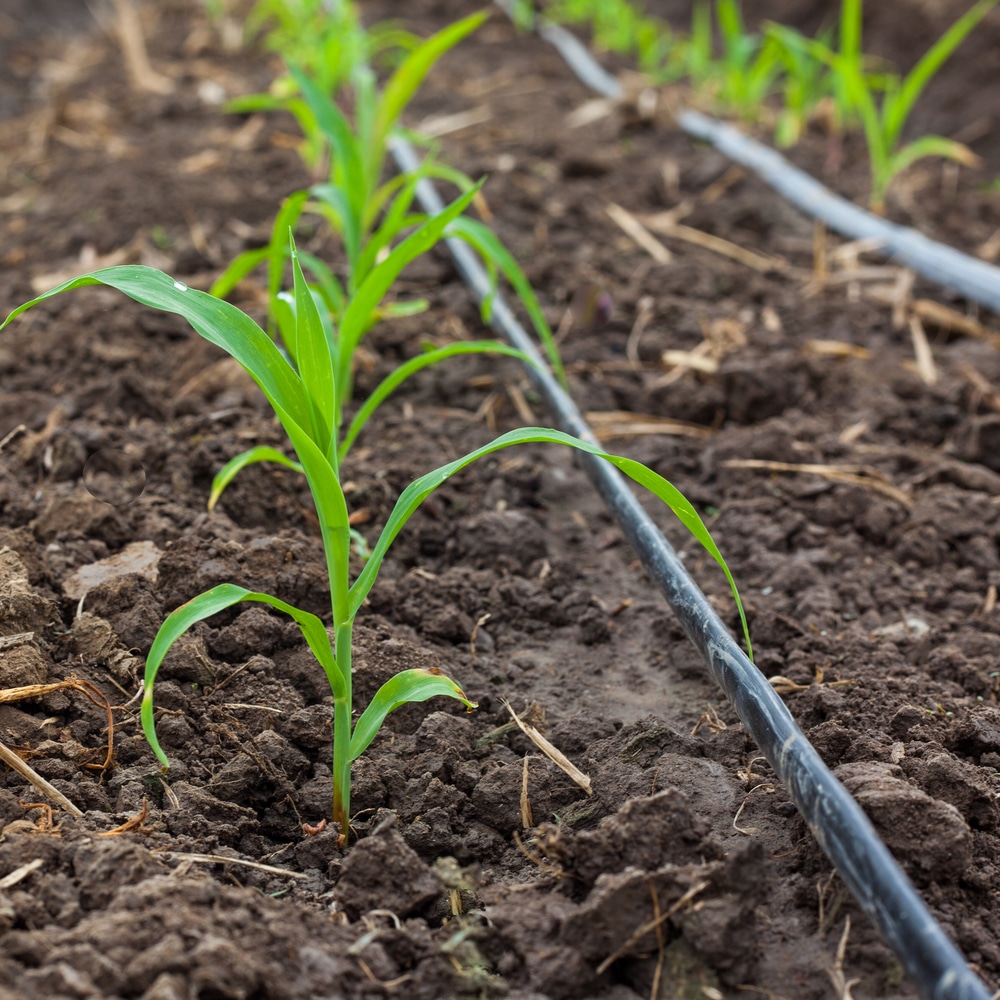
Beside the corn, I planted what I like to refer to as the workhorse of the summer garden: okra. This crop thrives on heat and seems to produce more the higher the temperatures climb.
Watermelon & Peppers
Last year I planted one of my Birdie’s Raised Beds with watermelon and pepper plants. Watermelon is a crop that loves the heat. It also prefers dry conditions as harvest time nears; the flavor is much sweeter when harvesting after a dry period.

Peppers also thrived in the heat as well and produced a lot of peppers for me. This was particularly true for peppers I grow for spices like cayenne or paprika. Bell peppers didn’t produce as well in the heat of the summer. I’ve learned from gardeners in even hotter climates than mine that afternoon shade can be helpful for bell peppers. But peppers like jalapeños and other spice peppers thrived.
Tromboncino Squash & Sweet Potatoes
If you are looking for something that you can plant for an early fall harvest and store over the winter, winter squash and sweet potatoes are both great options. Sweet potatoes love the heat and will grow under ground throughout the summer and be ready to harvest in early fall.
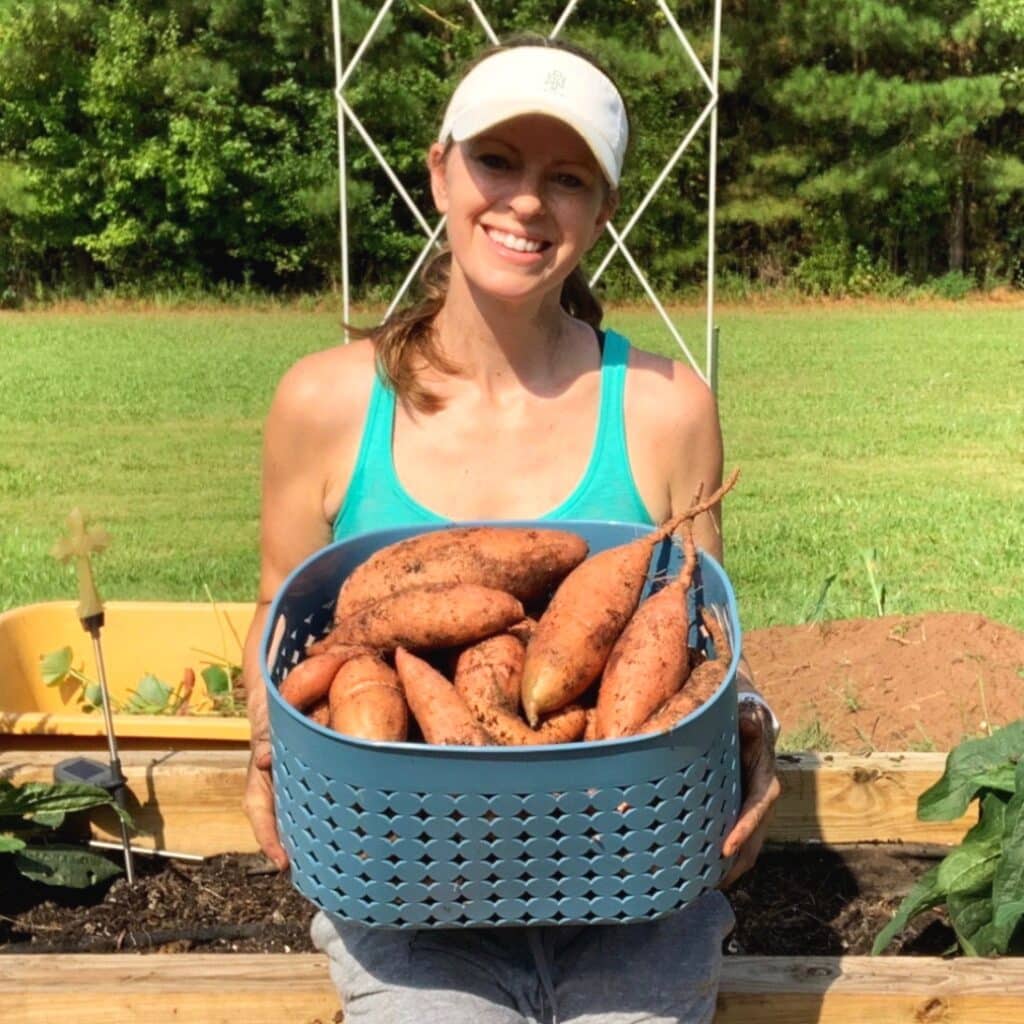
If you haven’t ever heard of a type of winter squash called tromboncino, it’s a great one! I grew it because of its resistance to the squash vine borer. It is also a versatile squash that can be used as a summer squash when young. If left on the plant to mature, it can be used as a winter squash and stored for later use.
Another great thing about this variety of squash is that you really only need one plant. I got so many squash off of my one plant last year and I even pruned it back. It is another workhorse in the garden.
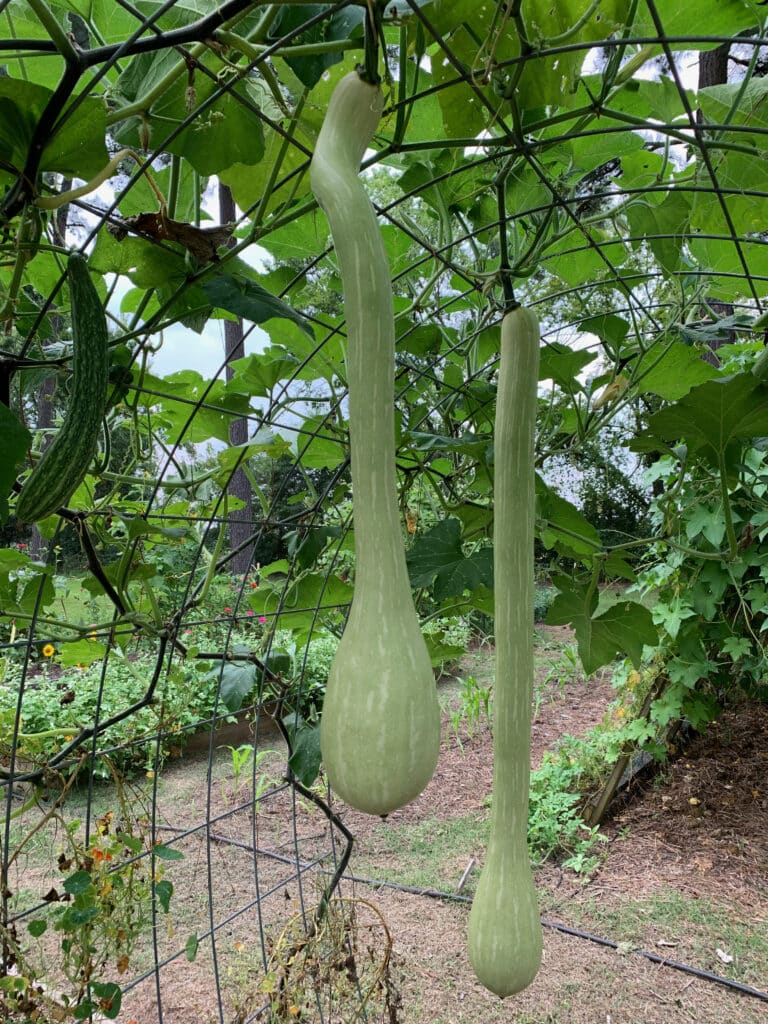
Cucumbers & Black Eyed Peas
I’ve seen a lot of gardeners talk about how their cucumbers begin to suffer in the heat, but I haven’t found that to be entirely true. I’ve instead noticed that while early planted cucumbers usually do die off in the heat, later plantings thrive. If I plant later plantings, they tend to actually flourish despite the heat and produce a lot for me.
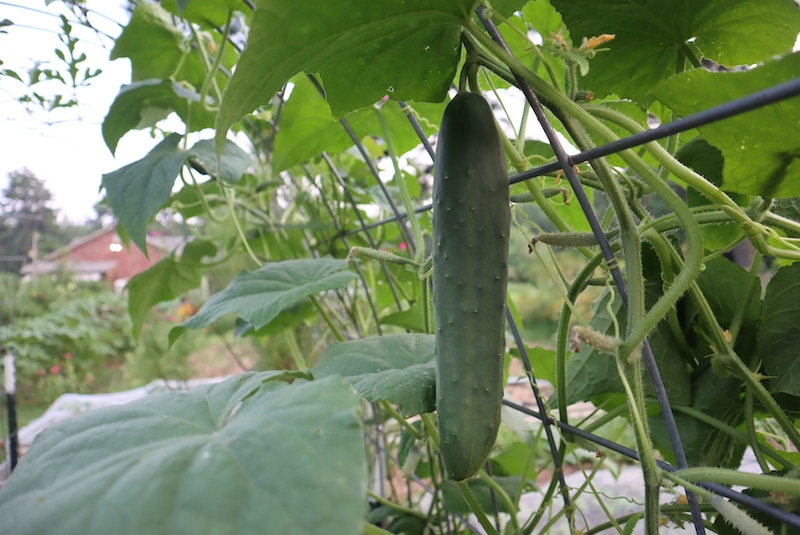
Black eyed peas love the heat of the summer and will produce a lot with little fuss. This is a great crop to plant behind a spring crop that comes out of your garden early in the season. Whether you want just a little bit or a lot for preserving, they are a great crop to grow.

Crops That Suffered
Not every “summer” garden crop performed well in the heat. Instead, several of my staple crops struggled. These were the ones I found that suffered the most.
Bush Beans & Pole Beans
Between the pest pressure and the heat, I had a very underwhelming crop of bush beans that I planted in the ground. When the heat set in early, the plants began to drop their flowers and did not produce well. They also got nailed by pests and disease, the plants looked awful and suffered.
I ended up planting a succession planting in my Greenstalk planter that performed much better later in the season.

Pole Beans also suffered from the heat. They didn’t have quite the same amount of pest pressure but they also dropped their blossoms in the heat and didn’t produce as large of a crop as they normally would. Because pole beans will continue to produce throughout the season, I left the plants so that when it did cool down I could get a harvest, albeit a smaller one.
Tomatoes
I know I mentioned the tomatoes that were planted next to cantaloupe in the “good” category, but other plantings of my tomatoes didn’t fare so well. The ones I planted in grow bags, for example, cooked in the heat and it was impossible to keep them irrigated well. Also, some varieties of tomatoes like Amish Paste shut down entirely.
My biggest takeaway with tomatoes was to evaluate the varieties and plant more heat-tolerant varieties. Also, I save my grow bag tomatoes for early in the summer or for fall.
Lessons Learned
A big lesson I learned after the heat last year was to rely on succession plantings. Crops that I planted a second and a third planting of did better than my first planting of that crop. Also, I learned not to be afraid to pull crops out when they are suffering and plant something else. If your bush beans are suffering in the heat, pull them out and plant okra in it’s place, for example.
Another tip could be to look into ways to shade your garden from the afternoon sun. Some crops can use some dappled light in the heat of the afternoon. If you know a portion of your garden can accommodate that, then plant those things that may struggle in those areas. Also popping up a umbrella for afternoon shade can be helpful as well.
All in all, it’s a learning experience to find which vegetables tolerate the heat in your climate the best. Try different crops, make notes, adjust planting times, and keep trying new things.
Do you get overwhelmed with garden planning?

Subscribe here for my best tips to plan your garden in just 7 days -- all for FREE.
Plus, I'll send you my "In the Garden E-mail" on Fridays, periodic updates on garden resources relevant to you, and you'll receive access to my entire bank of free garden downloads!
You are also agreeing to our privacy policy.

